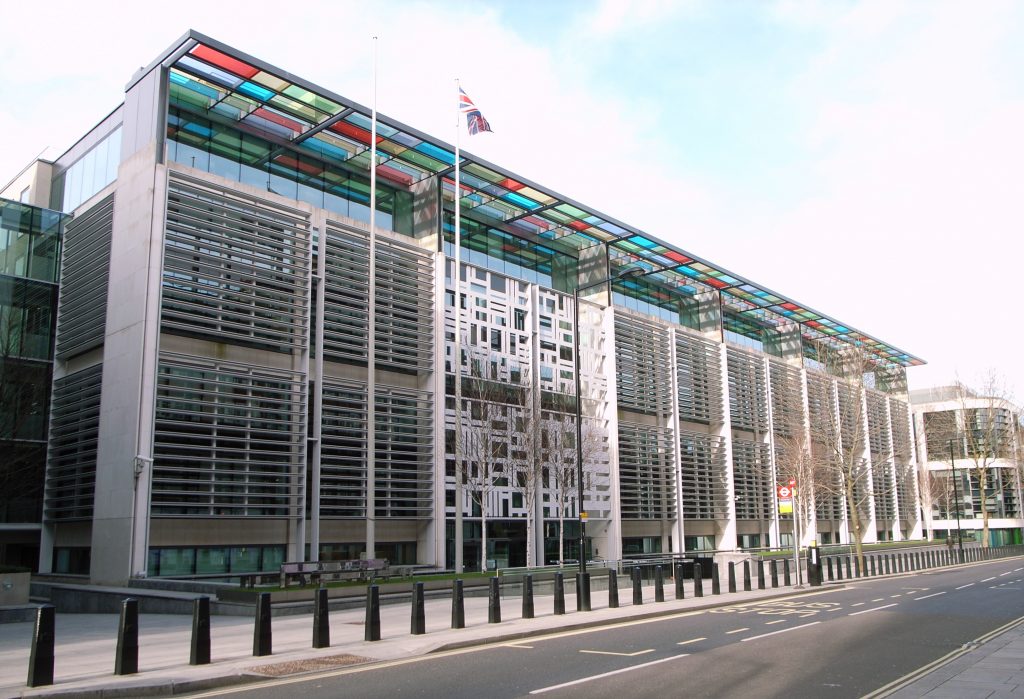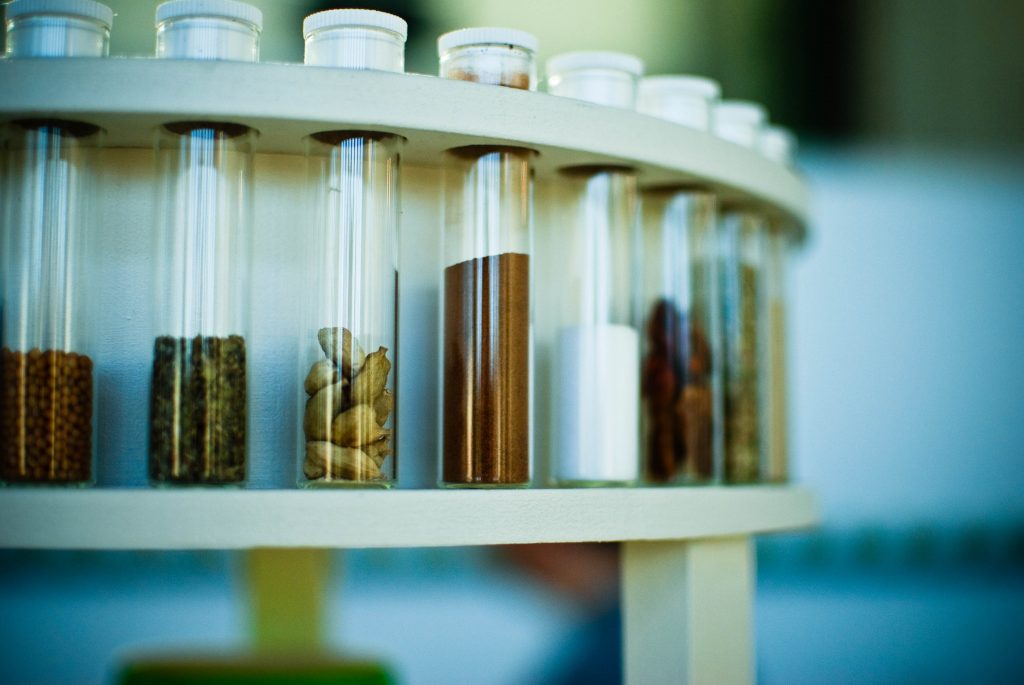May 26th, 2016: The Conservative Government’s long awaited and much-criticised Psychoactive Substances Act finally comes into force, at a stroke outlawing hundreds, if not thousands, of products that had previously been perfectly legal. Everything from Kratom to Black Mamba, by way of Salvia Divinorum, and Gogaine, has, over the previous weeks, been hurriedly gotten rid of. A new age of drug prohibition is ushered in; one where everything is illegal unless the Government say otherwise.
Home Office sources blame the delay in the Act’s implementation on protests from the police force, who say it is unenforceable. Many critics – including legal experts – agree, but the Government are unmoved. These drugs are dangerous, and therefore banning them is the only option. The critics are loud and many, but in the end it makes no difference. The Act becomes law, and the arguments slowly fade away.
Now, coming up for 8 months on from that day in May, it is time to take stock and, if necessary, restart those arguments. The Government themselves – specifically the Home Office – put out a brief press release in December celebrating what they saw as the successes of the Act in its first 6 months. Almost 500 arrests have been made they said, with 31 head shops closed and 4 people sent to prison, with more to come. “We banned new psychoactive substances because they are not safe, they can devastate lives and we will not tolerate them in this country,” said Home Office Minister Sarah Newton, “I am pleased to see the police making full use of the new powers, arresting dealers and ensuring they are punished with prison sentences which reflect the seriousness of this crime.”
But are the Home Office right to be pleased with how the Act has gone so far? A closer examination of those figures – and the real people behind them – suggests that, at the very least, a little more nuance is needed when evaluating its successes and failures.
For example, the 500 arrests and 4 successful prosecutions. Given that the Psychoactive Substances Act – to its credit – does not criminalise possession of said substances, it is safe to assume that all 500 of those arrests were of people suspected of either producing or dealing in banned substances. To have caught and arrested 500 such individuals is of course seen as a success by the lawmakers – it is one of the main aims of the legislation after all. But to only succeed in locking up 4 of them? That’s a success rate of 0.8%. Hardly stellar.
Things look even less rosy when you attempt to find out who those 4 people were. The only one the Home Office gave any information about – William Cook – was certainly a pretty unpleasant individual. At the same time he was sentenced under the PSA for selling nitrous oxide at a music festival, he was also locked up for dealing cocaine, laundering £55,000, possession of an offensive weapon, and possession and distribution of child pornography. The press release put out by the Home Office in December was – rightly – full of pride that he had been put away.
But there’s a problem even here. Firstly, it should probably go without saying that the ideal person to be selling nitrous at a festival is not a child pornographer. But the Psychoactive Substances Act has unfortunately, but wholly predictably, pushed the market for this incredibly benign drug into the hands of genuine criminals like William Cook. The other problem is the sentence. In their press release, the Home Office were very keen to stress that he had felt the full force of the law in being put away for 42 months for the offence of selling nitrous oxide. But what they didn’t mention were his other offences, or the fact that for all of those other offences combined, he received the same sentence: 42 months. Whichever way you cut it, that doesn’t look good.
It’s important that the Act gets a fair trial, however. The Home Office’s press release is just that, a press release. Not an in-depth report. The Act is still less than a year old, after all. The true test of its effectiveness will not come from an analysis of how many people have been locked up. There are many other factors that need to be examined, which can only be done by speaking to those on the frontline: drug and alcohol support teams, doctors, paramedics, and drug users themselves. Unfortunately for the Government, the early signs are not great.
Research undertaken early last year by Paul Gray and Robert Ralphs of Manchester Metropolitan University, and elucidated in an article for The Conversation, found that by far the most popular NPS before the introduction of the Psychoactive Substances Act was synthetic cannabinoids. Ralphs explained to me that as part of their research, he and others “started hanging about in the main head shops in the city centre and trying to speak to people, thinking we’d get a broader range of drugs but again, you know, it was over 95%. If we were in there for an hour or two hours there’d be twenty odd sales, if anything you might get one that wasn’t synthetic cannabinoids.”
The assumption among the researchers and the drug users themselves was that the ban would just push the market out of the shops and onto the streets, and that has proved correct, according to Ralphs. His team have just started another research project looking at the impact of the Act:
“We’ve just started last week – they’ve commissioned us again to actually specifically look at what the impact of the act has been” he told me, “We were still in contact with the homeless community and pretty much straight away [after the Act was introduced] the price just doubled, and the deals are less. In the head shops most of the packages were 1.5g packages, £10 a pack or 3 for £20, and there was one headshop that was selling 0.3g deals – they were actually making their own and selling smaller deals to people who couldn’t afford to pay £10 a bag, so we’re hearing that now in terms of street dealers catering for beggars, people are selling it in smaller quantities, targeting the homeless community and people who can’t afford to buy it in bigger amounts.”
This targeting of the homeless community has led to other problems, too:
“What we reported was that lots of people are committing acquisitive crime – shoplifting, begging, sex work – to support their habits, and that’s just increased now because the prices have gone up and the quantity in the deals has gone down, so they’re having to get more money to pay for the same amounts. Then on top of that is the violence. Lots of the homeless community will talk about how it’s destroyed the community – they’re kind of fighting each other and stealing from each other at night, stealing each other’s supplies, robbing each other’s tents, etc. And again people talked about that escalating ten fold since the ban because people are paying more for it and there’s less of it about. The issues that we’d previously identified have just intensified.”
I asked Ralphs whether he thought the Act had produced any positive effects. He was adamant that it has not:
“No. The thing is that yes it stops the visibility of people being able to buy it from head shops, but for those that are using in problematically, and in particular the homeless community, they’ve still got access to it so it’s just causing more problems and the same problems that were there before in terms of acquisitive crime, violence, and conflicts within the homeless community”
In researching this article, I travelled to Torbay, on England’s south coast, to speak with drug users and frontline staff about the successes and failures of the Act, and found equally worrying tales of the negative impact the Act has had there.
Torbay has been called ‘the English Riviera’ (or Torbaydos), and is indeed a beautiful part of the country. But it is one which has a long history of problems when it comes to drug abuse.
Authorities in the area have fought a long battle against their local headshops, blaming them for the increase in synthetic cannabinoid use amongst the Bay’s growing homeless population, and in 2015 a certain Theresa May – then Home Secretary – visited Torquay to assure citizens that the Conservative government would bring in a blanket ban if and, as it turned out, when they won reelection.
It’s easy to see why there was such a clamour to tackle the legal high ‘problem.’ Across the county there were stories of the harm that can be caused by these substances. In February 2016, it was reported that a woman found hanged in Torquay had been addicted to legal highs, which, it was suggested, had exacerbated mental health problems and left her penniless. In 2014, a young father from Tiverton was found collapsed inside a locked public toilet surrounded by empty packets of a legal high, and despite the best efforts of paramedics at the scene, was unable to be revived. In 2015, a first year student at Plymouth University was found dead in his bedroom after taking some kind of synthetic stimulant.
Clearly, there was a problem that needed to be tackled, and the Psychoactive Substances Act attempted to do just that. The problem is, according to the users I spoke to, it has merely succeeded in brushing the problem under the carpet, and is in some cases causing far more harm than it is preventing.
Among those users was Shannon (name changed), a former heroin user who switched to legal highs in 2012, before quitting entirely when the Act was introduced. She expected the banning of these drugs to give her the chance to “get clean,” but instead found that, before long, the Bay’s heroin dealers had picked up the trade. Some even began phoning, or pestering her on the street.
The temptation to begin using again was almost too much, but so far she has managed to resist. Others haven’t been so lucky. Tom, an habitual synthetic cannabinoid user, had supported the introduction of a blanket ban, but now finds himself spending more money than ever before on increasingly small amounts of his drug of choice. He’s increasingly worried, he told me, of what the future holds for those like him who haven’t been able to kick the habit. “I’ve tried to get help,” he said, “but the support services aren’t fit for purpose. They know what to do if you’re on heroin, or crack, but when it comes to legals they’re clueless.” It was a refrain I heard time and again – that the services exist, and are full of people who want to help, but the education (and the funding) isn’t in place to allow them to do so.
Shannon, Tom, and most of the other drug users I spoke to in Torbay, stressed that the Psychoactive Substances Act had not been all bad. I heard stories about a family who had all at one time or another been hooked on ‘legals,’ but who had, since the Act came in and head shops stopped selling, been able to leave the dugs behind as a family. Many of the people I spoke to were adamant that the ban was helping. But I also heard about users who had, as a result of coming into contact with street dealers after the head shops closed down, moved onto more traditional drugs like heroin.
One person I spoke to – who did not want to be identified, even with a fake name – expressed anger that the new law meant that dealers were now targeting children with highly addictive, formerly-legal drugs.
Unfortunately, despite my repeated efforts, I was unable to speak to anyone from Torbay’s Drugs & Alcohol service team to get their view on the impact the new law is having on drug users in the area. I did manage to speak to one member of NHS staff – a local paramedic – who assured me that the success of the Act was being felt by ambulance staff who were being called out to far fewer emergencies caused by NPS use. He did concede that this could be due to users feeling less confident about phoning the emergency services, unsure as to whether their drug use could now land them in trouble with the law, but insisted that banning dangerous drugs was the correct approach.
To sum up then, the success or failure of the Psychoactive Substances Act – so far – depends on what its aims were. If, as was suggested before its implementation, they were to close headshops and deter use, whilst allowing the police to focus on producers and dealers, then there is some evidence that it is working. Admittedly 31 head shops out of 332 closing down isn’t quite what was promised, and the number of dealers put in prison is still very low, but to the Act’s supporters each one will represent a victory. Add to that the anecdotal stories of the people who have stopped using formerly-legal highs and it becomes difficult to say that the Act has been a total disaster.
However, it seems pretty clear that for the majority of people, this new legislation has not made them safer. Synthetic cannabinoid use is still rife among the homeless population, and shows no signs of slowing down. The same is true in the beleaguered prison system, where no amount of dogs barking forlornly at drones are going to fix the problem. Even those users who have quit are still at risk of being tempted back into what is now a completely unregulated, and consequently far more dangerous market.
Perhaps most tellingly, the local press – at least in Devon – are still printing stories of lives lost to novel psychoactive substances. Last summer, a teenager drowned in the river Dart in Totnes after taking a drug called ’N-Bomb,’ prompting the local police force to declare a new crackdown on drug use known as Operation Venus. In April, a head shop owner who had just been forced by the new law to close down his three businesses, overdosed on his own stock and died in Exeter.
Ironically, recent developments suggest that one of the supposed successes of the Act – the closing of headshops, and the removal from sale of legal highs from the high street – was something that could have been achieved even without enacting a blanket ban. The owner of Red Eye headshop in Oxford was this week handed a six month suspended sentence and ordered to pay £120,000 in fines and costs for selling legal highs. But he was not prosecuted under the Psychoactive Substances Act. Instead, police utilised the General Product Safety Regulations 2005 to shut him down. The PSA, with all its related harms, was not even part of the discussion.
It is perhaps too early yet to say how history will ultimately judge the Psychoactive Substances Act. It may well be that it is not quite as socially destructive as its predecessor, the Misuse of Drugs Act, for example – after all, it doesn’t criminalise users – but the early signs are not great, despite scattered stories of success. Lives are still being destroyed by the more dangerous varieties of these drugs, and those who use them do so in a far more dangerous world than they did just a year ago. Use amongst the most vulnerable members of society does not seem to have decreased, and support services – anecdotally at least – are struggling to cope.
It would be easy to indulge in gloating and told-you-so’s, but ultimately there are real lives at stake here, and the greatest success that the government have had – at least for them – is that the fate of those lives, and the real issues around drug use, have been pushed farther out of sight, and out of mind. Unfortunately, it looks as though the government are all too happy to leave them there.
Deej Sullivan is a journalist and campaigner. He regularly writes on drug policy for politics.co.uk, London Real, and many others, and is the Policy & Communications officer at Law Enforcement Against Prohibition UK. Tweets @sullivandeej



